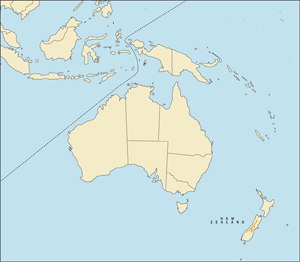Himalayan Tahr - South Pacific | Online Record Book Preview
This is a preview of the Himalayan Tahr - South Pacific species only.
Once you subscribe you will be able to view all the entry details for hundreds of different species, including full score sheets and photos.
This species has several classifications, to view each one you can click on the links below to jump down to that section:
Himalayan Tahr - South Pacific |
 |
Hemitragus jemlahicus
Tar del Himalaya (Sp), Himalaya Tahr (G), Tahr de l'Himalaya (F). The English derivation of the Nepali name for this animal may be spelled "tahr" or "thar." Neither is "correct," but "tahr" is preferred by most English-language publications.
DESCRIPTION (male) Shoulder height 40-42 inches (102-107 cm). Weight 200-220 pounds (91-100 kg), sometimes more. The female is much smaller.
A medium-sized, powerfully built animal with a full coat of hair and a shaggy mane around the neck and shoulders and extending to the knees. The hairs of the mane may be as long as 10-12 inches (25-30 cm) in winter. Color is reddish-brown with a dark, sometimes indistinct, dorsal stripe and a yellowish or whitish mane. The face is dark brown, the legs a dark blackish-brown. The hoofs are specialized for negotiating steep terrain. Horns (both sexes) are short and stout, laterally compressed, keeled in front and curved backward to tapered points. Females lack a mane and have smaller horns.
BEHAVIOR A gregarious herd animal. Adult males are in bachelor groups during the summer. Females and juveniles tend to stay at lower elevations than older bulls, who move down to join them during the breeding period. Prefers to live on steep slopes and exhibits remarkable climbing ability on steep cliffs. Eyesight is very good, hearing and sense of smell are fair. Feeds early and late in the day, and often during the night. Diet includes grasses and foliage. Spends most of daytime resting, often in caves or on ledges near escape routes. Seldom vocal, but sometimes makes a short, high-pitched whistle when alarmed.
HABITAT Cliffs, steep mountain slopes and high pastures, at altitudes up to about 8,500 feet (2,600 m).
DISTRIBUTION The South Island of New Zealand. In the mid-1970s, wild populations were found in the Southern Alps from the Waimakariri and Arahura watersheds in the north to the upper Paringa and Landsborough valleys in the south, and to the headwaters of the Wills, Makarora, Hunter, Dingle, and Ahuriri rivers in the east. Also found in the Ben Ohau, Two Thumb, Ben McLeod, and Arrowsmith ranges. This population has since been reduced by intensive aerial culling by the government. Tahr are also found on private properties on both South and North islands.
REMARKS There are three species of tahr, all native to Asia and each quite different from the others. The one introduced in New Zealand is the Himalayan tahr from the southern slopes of the Himalayas.
According to Lever, the first Himalayan tahrs were imported to New Zealand in 1904 when three pairs, originally from India, were shipped from Woburn Abbey in England to the New Zealand Tourist Board and released near Mt. Cook. Eight more were imported and released on Mt. Wakefield in 1909. In 1931 and 1937, progeny of these animals were set free near Mt. Cook and in the Sealey Range. The introductions were highly successful, as is evinced by records showing that more than 30,000 tahrs were killed by government cullers between 1937-1984.
The Himalayan tahr is a superb game animal that lives in difficult, dangerous terrain and normally is difficult to approach.
|
Classifications
Himalayan Tahr (free range) - Species Detail |
| Scientific Name: |
Hemitragus jemlahicus |
Gold: |
42 6/8" |
Gold (Bow): |
41 6/8" |
| AKA: |
|
Silver: |
40 4/8" |
Silver (Bow): |
40 3/8" |
| Endangered: |
|
Bronze: |
37" |
Bronze (Bow): |
33" |
| Member |
Taken |
Location |
Hunting Company/Guide |
Measurer |
MOK |
Score |
OR |
MR |
The Himalayan Tahr (free range) currently has 1,134 Entries listed in the SCI Record Book!
Once you subscribe you'll be able to access photos and full socre sheets for all of these entries. Plus you can filter, sort, and search through all species and entries in the SCI database. If you would like to subscribe now to have access to the entire database, please click here.
|
Return to Top
Himalayan Tahr - Species Detail |
| Scientific Name: |
Hemitragus jemlahicus |
Gold: |
44" |
Gold (Bow): |
38 4/8" |
| AKA: |
|
Silver: |
41" |
Silver (Bow): |
0" |
| Endangered: |
|
Bronze: |
37" |
Bronze (Bow): |
33" |
| Member |
Taken |
Location |
Hunting Company/Guide |
Measurer |
MOK |
Score |
OR |
MR |
The Himalayan Tahr currently has 90 Entries listed in the SCI Record Book!
Once you subscribe you'll be able to access photos and full socre sheets for all of these entries. Plus you can filter, sort, and search through all species and entries in the SCI database. If you would like to subscribe now to have access to the entire database, please click here.
|
Return to Top
|




